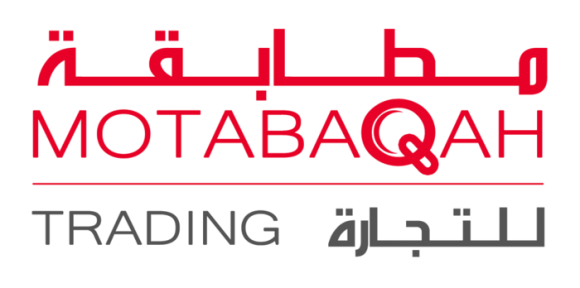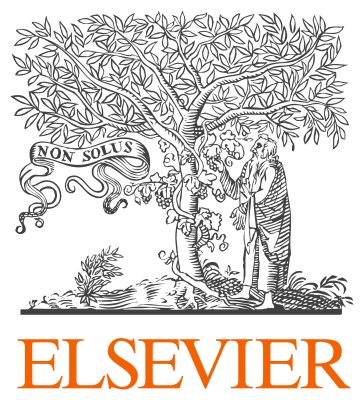Executive Forum
IF01: Executive/CTO Forum on "The Future of the Telecom World”
Industry Panels
IP01: Large Scale Wireless Testbeds – Scaling the Experiment
IP02: 5G Beyond Technologies
IP03: Sustainability Challenges and Opportunities in 5G and Beyond 5G
IP04: 5G Network Slice Management
IP05: Security Threat Landscape for IoT/5G Infrastructures
IP06: Is 5G Coming to Rural Areas Any Time Soon?
IP07: The Rise of Mission Critical Applications – Wireless Solutions, Challenges and Opportunities
IP08: 5G Verticals Enabled by Edge Computing
IP09: When Quantum-Signal Processing & Communications Meet
IP10: 5G and AI: Technology’s Hottest Power Couple
Industry Seminars
IS01: 5G Network Slicing Enables Next Wave Network Transformation
IS02: 5G New Radio Standards - Release 15 and Beyond
IS03: 5G NR: From Specification to Over-the-Air Trials
IS04: Cloudification of 5G and Beyond
IS05: Future Indoor Networks: The Role of Wi-Fi and Its Evolution
Industry Podium Presentations
IPP01: Building Next Generation Wireless Communications Systems with Machine Learning for Deep Adaptation and Awareness
IPP02: 5G NR Over-the-Air Testing for Phased-Array Antenna Systems: Extreme Temperature Testing in a Climate Bubble
IPP03: Emerging Low Power Wake-Up Radios and Signals
IPP04: SDRs with Open Source Software: The Latest in USRP
IPP05: Silicon Solutions for the Next Wave of Mobile Data
IPP06: Accelerating Network R & D Using NetSim
Executive Forum
Monday, 10 December, 13:30-15:00
IF01: Executive/CTO Forum
Room: ADNEC, Conference Hall A: Part A
Moderator: Hatem Bamatraf, CTO, Etisalat International
Panelists:
- Andrew Alleman, Chief Architect, Advanced Network Solutions, Intel
- Wen Tong, Head of Wireless Research and Head of Communications Technologies Laboratories, Huawei
- Marcus Weldon, President of Bell Labs and Corporate CTO, Nokia
- Saeed Alzarouni, SVP, Mobile Network, Etisalat Group
In the current age, everything moves fast, very, very fast! And the telecom world is no exception… in reality, the telecom operators are one of the “guilty parties” of how fast the world is moving these days: information flows at the speed of light, deals get done without even the participants seeing each other, tracking a package around the world was never easier. And these are just a small number of examples…
But what about the future? And how will all the players in the telecom arena (from solution providers to telecom operators) evolve? How will 5G, IoT, Blockchain, AI, and so many other technologies affect the parties and, in the end, all of us?
Industry Panels
Monday, 10 December, 8:00-9:30
IP01: Large Scale Wireless Testbeds – Scaling the Experiment
Room: ADNEC, Conference Hall A: Part A
Organizer: Ben Coffin, National Instruments
Moderator: Ben Coffin, SDR Product Manager, National Instruments
Panelists:
- Abhimanyu Gosain, Technical Program Director, PAWR Project Office
- Jianhua Zhang, Professor, Beijing University of Posts and Telecommunications
- Ivan Seskar, Associate Director of WINLAB, Rutgers University
- Sofie Pollin, Associate Professor, KU Leuven
- Taro Eichler, Technology Manager 5G Communications, Rohde & Schwarz
With the growing need for creating real-world wireless testbeds to close the “Valley of Death” between Academic Research and Industry, this panel aims to understand what is needed from applied research in wireless communications. How can collaboration on large city-wide deployments improve the way standards are developed, technologies are proven, and vertical industries enabled.
IP02: 5G Beyond Technologies
Room: ADNEC, Conference Hall A: Part B
Organizer: Yi Wang, Huawei Technologies Co., Ltd.
Moderator: Dr. Yi Wang, Huawei, Shanghai, China
Panelists:
- Takehiro Nakamura, VP, NTT DoCoMo, Japan
- Dr. Amitava Ghosh, Nokia, Director of Radio Access Department, USA
- Dr. Peiying zhu, Huawei, Canada, Fellow and 5G Director
- Dr. Sumei Sun, I2R, Singapore, Fellow and Head of Communications and Networks Cluster
The 5G standards are expected to be approved by ITU around 2020 timeframe followed by the initial commercial deployments in the early 2020s. As such, it is time to initiate a brainstorming endeavor towards the beyond-5G wireless networks; we refer to such networks as 5G+ in order to include the evolution of the 5G standards in 2020s and to perform the groundwork for those to be developed towards 2030. This panel is aimed to discuss the key technologies of 5G beyond. Invited speakers will come from both industry as well as academy in effort to reach common views.
The goal of the panel is to bring together researchers from industry and academia to present and discuss the latest developments in 5G beyond technologies, their impact on industrial standards and the resulting technical challenges. The panel is going to cover but not limited to the topics as follows:
- Vision, requirements, use cases, and trend of 5G beyond or 6G
- Enable key technologies of 5G beyond or 6G
- Impacts to industrial standards
Monday, 10 December, 15:30-17:00
IP03: Sustainability Challenges and Opportunities in 5G and Beyond 5G
Room: ADNEC, Conference Hall A: Part A
Organizer: Charles Despins, École de Technologie Supérieure (ÉTS), Université du Québec, Montréal, Canada
Moderator: Charles Despins, Vice-President – Research, Partnerships & Faculty Affairs, ETS-Montreal, Canada
Panelists:
- Jaafar Elmirghani, Professor and Director of the Institute of Integrated Information Systems, University of Leeds, United Kingdom
- Luis Neves, Managing Director, Global e-sustainability initiative, Belgium
- Magnus Olsson, Principal, Energy Efficiency, Huawei Technologies, Sweden
- Thierry Leboucq, Chairman, Greenspector, France
Currently transforming all spheres of human activity, ICT is emerging in the 21st century as the dominant driver of sustainability with the potential to reconcile economic growth, environmental protection and societal benefits. It is notably a key tool in the fight against climate change as it can enable a 20% reduction in global carbon emissions by 2030. However, achieving these outcomes will require a holistic approach to the proper design, broad application, widespread adoption and social acceptance of ICT products and solutions.
This sustainability potential of ICT thus requires a complete rethinking of how not only we design but also how we use ICT. It’s a huge challenge that can only be addressed by bringing together the research community, ICT equipment and solution providers, practitioners in ICT vertical markets, the standards community as well as public policy influencers and decision makers. In the context of commercial deployment of 5G in the early 2020’s and Beyond 5G likely a decade later, this panel will explore the technical, commercial as well as policy challenges and solutions to achieve sustainability through ICT.
As the world’s largest technical professional organization dedicated to advancing technology for the benefit of humanity, the Institute of Electrical and Electronics Engineers (IEEE) and its 430,000 members from around the globe, are committed to providing leadership on these issues. In this context, the mission of the IEEE Sustainable ICT Initiative, launched in January 2015 by the IEEE Future Directions Committee and the IEEE Communications Society, has been defined as to “build a holistic approach to sustainability by incorporating green metrics in all IEEE technical domains”. Viewed through the triple bottom line of sustainability (economic, environmental and social), the Sustainable ICT Initiative offers a compelling opportunity for IEEE to demonstrate the full impact of the technology innovation it supports.
Tuesday, 11 December, 8:30-10:00
IP04: 5G Network Slice Management
Room: ADNEC, Conference Hall A: Part A
Organizer: Maria João Barros, Eurescom GmbH
Moderator: Maria Barros Weiss, H2020 5G PPP SliceNet project Coordinator, Programme Manager at Eurescom, Germany
Panelists:
- Jose Alcaraz-Calero, H2020 5G PPP SliceNet Technical Project Manager, Professor at University of the West of Scotland, UK
- Xavier Costa Perez, Head of 5G Networks R&D, NEC Laboratories Europe, Germany
-
Ian C. Wong, Senior Group Manager, Advanced Wireless Research, National Instruments
- Luiz daSilva, Director of CONNECT, Professor at Trinity College, Dublin, Ireland
5G network infrastructures are globally marking the next major milestone in the evolution of mobile networks and telecommunication networks in general.
Global 5G R&D initiatives have been launched in major economic areas worldwide. Evidence of that are actions in Europe undertaken by the 5G Infrastructure Association (5G-IA) in a contractual Public-Private Partnership (5G PPP) with the European Commission, as well as several other actions globally, including among others the IMT-2020 promotion group in China, the 5G Americas in North America, the 5G Forum in South Korea, the Fifth Generation Mobile Communications Promotion Forum in Japan, and 5G Brazil in Brazil.
Major international standards developing organizations (SDOs) and industry alliances such as 3GPP and the NGMN (Next-Generation Mobile Networks) Alliance are active in 5G specific undertakings. In Worldwide network slicing has emerged as a remarkable paradigm shift from 4G to NFV/SDN-enabled 5G and has been identified as a key 5G architectural requirement.
However, towards implementation and deployment of 5G infrastructures four gaps have to be filled:
- End-to-end (E2E) slicing has been identified as a high-priority technical gap to tackle for E2E application quality. To date reported prototypes do not implement slicing across administrative domains or large-scale operation.
- Current solutions have mostly focused on the control and data plane for network slice prototyping.
- Vertical industry related studies yield a strong interest of the verticals stakeholders to form partnerships with 5G ICT industry stakeholders in achieving the fully connected society vision of 5G. To date little attention has been given to facilitate vertical businesses integration.
- The Quality of Experience (QoE) of users of 5G network slices has to be addressed without over-provisioning of QoS – which is mostly the current practice – especially because this practice would defeat the objective of lower CAPEX/OPEX for the new 5G infrastructure.
Tuesday, 11 December, 13:30-15:00
IP05: Security Threat Landscape for IoT/5G Infrastructures
Room: ADNEC, Conference Hall A: Part C
Organizer: Ernesto Damiani, Cyber-Physical Systems Center Director, Khalifa University Khalifa University , EBTIC
Moderator: Ernesto Damiani, Cyber-Physical Systems Center Director, Khalifa University Khalifa University , EBTIC
Panelists:
- Gerard Parr, Professor & Head of School of Computing Sciences at the University of East Anglia UK.
- Paul Kearney, Professor and Head of Cybersecurity Research in the School of Computing and Digital Technology, EBTIC Fellow.
- Jankun Hu, University of New South Wales and Australian Defense Force Academy
- Claudio Ardagna, Universita’ degli Studi di Milano
The growth of the IoT market in terms of connections is bringing about an overall hunger for more bandwidth, which implies a range of security issues for operators. Experience has shown that unsecured, compromised IoT devices can fuel large-scale Distributed Denial-of-Service (DDoS) attacks. Another security concern is linked to the IoT requirement of handling “flash mobs”, i.e. high variability in the number of IoT devices connected to each segment of the network. When too many devices connect unexpectedly from one place, sudden demands on data and control traffic may overwhelm the network. 5G promises to answer these demands using network slicing for traffic control and taking advantage of network virtualization to distribute computational load to the edge. However, the security threats related to these key aspects of 5G still lack common understanding or shared definitions.
- 5G network virtualization supports operators in creating virtual resource sets for the benefit of their customers, who share part of the control/management with the underlying infrastructure. However, it raises 5G security issues close to cloud security ones, requiring new solutions for lightweight Authentication and Authorization, RAN (multi-access) security, User Equipment (including IoT) confidentiality and key management.
- Initial security concerns on slicing referred to lack of isolation between slices. However, already in 2016 NGMN listed a set of key security issues beyond isolation. Later, the multiplicity of decision-makers (including Artificial Intelligence models and data analytics agents) in charge of network slicing raises serious concerns about adversarial attacks to software implementing intelligent slicing.
Today, concerns related to 5G virtualization and slicing are just two of many emerging 5G/IoT-specific security issues. The heterogeneous nature of IoT/5G components, systems and services is leading to an unprecedented combination of specific software-based vulnerabilities. Indeed, Ai-based intelligent 5G slicing shows a novel attack surface but also great opportunities to deliver the desired level of cybersecurity.
There is a growing need to achieve an overall vision of IoT/5G complex security landscape putting together ideas from all groups and bodies active on 5G security such as ETSI working groups dealing with Network Function Virtualization (NFV) and management issues (MANO), IETF, and others.
Wednesday, 12 December, 8:30-10:00
IP06: Is 5G Coming to Rural Areas Any Time Soon?
Room: ADNEC, Conference Hall A: Part A
Organizer: Fawzi Behmann, President, Telnet Management
Moderator: Fawzi Behmann, President, Telnet Management
Panelists:
- Ted Lehr, Ph.D., IT Data Architect, Business Application Services Communications and Technology Management City of Austin, Texas, USA
- Semih Aslan, Ph.D., Assoc. Prof. & Lab Director, Texas State University, San Marcos, Texas
- Slawomir Pietrzyk, Ph.D., CEO, IS-Wireless, Pulawska 45b, Piaseczno/near Warsaw, Poland, EU
- Merouane Debbah, Ph.D., Vice-President, Huawei France R&D Center, Director, IEEE Fellow, Mathematical and Algorithmic Sciences Lab, Cedex, France
5G is expected to contribute greater than $100B to the economy within the next ten years. The full 5G vision (Release 16) is expected by the end of 2019. 5G first commercialization is planned by many countries in the coming few years.
5G services would include urban and rural areas. Rural 5G wireless services can provide improvement in the quality of lives of individuals and greater productivity in business.
From all records, implementation of 5G for rural will take place after urban. However, There is an economic value of early adoption 5G in certain rural communities capitalizing on advancement of virtualization and network slicing and use of “thin” remote radio heads and efficient use of radio resources.
5G is also about reducing the cost of delivering [GB] of data and about making the deployments faster and less intrusive.
This can be done by cost savings related to virtualization and slicing, use of “thin” remote radio heads and efficient use of radio resources. In effect 5G RAN/core infrastructures we foresee that it would be very cost effective – and this is exactly what’s needed in the rural areas.
5G early adoptions of applications and services for rural would include: Remote e-health, which is important as often people living in the rural areas have tougher access to health infrastructure (distance) this would include remote robotic arm surgery. Other examples may include IoT for agriculture: crops, livestock monitoring and aerial vehicles in multiple applications such as first responders, energy management, public health and of course agriculture. Other application can be the Virtual Reality/AR.
IP07: The Rise of Mission Critical Applications – Wireless Solutions, Challenges and Opportunities
Room: ADNEC, Conference Hall A: Part B
Organizer: Rao Yallapragada, Director of Advanced Technologies, Intel Corporation
Moderator: Rao Yallapragada, Director of Advanced Technologies, Intel Corporation
Panelists:
- Chih-Lin I, Chief Scientist, China Mobile Research Institute
- Amitava Ghosh, Fellow, Radio Interface Group, Nokia Bell Labs
- Henrik Sahlin, Ericsson Research
- Taro Eichler, Technology Manager, Rohde & Schwarz
- Shugong Xu, Professor, Shanghai University
There are emerging new services and applications requiring lower latency, better reliability massive connection density, and improved energy efficiency in an unprecedented fashion. Private LTE & 5G-ready network rollouts are accelerateing driven by critical communications and industrial IoT. The advent of high-performance fixed and mobile broadband has transformed corporate operations in the enterprise. The trend continues wherein applications continue to shift to the cloud and mobility extends application are reaching across geographies, corporations aiming at new efficiencies while accelerating innovation speed. On the other hand, government operations comparatively move rather slowly, public-safety application are witnessing the potential for an equivalent transformation as emergency services networks are modernized.
Ultra-reliable low latency communication (URLLC) is an important new feature brought by 5G, with a potential to support a vast set of applications that rely on mission-critical links such as industrial internet, smart grids, infrastructure protection, remote surgery and intelligent transportation systems. Although latency is one of the core elements and is currently in works to provide a 0.5 millisecond range with latest 3GPP standards, the mission critical applications is more than latency as it refers to applications that require secure data communications from one end to another with ultra-high.
The implementation is unquestionably will be most challenging and problematic as the problem needs satisfy two conflicting requirements: low latency and ultra-high reliability, a vastly different type of quality of service compared to the traditional mobile broadband applications.
This panel will review the current state-of-the-art in addressing the mission critical problems with an emphasis on technical challenges and solutions for the key use cases and applications is targeted for, e.g., Tele Surgery, Industrial Automation and Automated Driving.
Further this panel will discuss the basic principles in implementing mission critical services with 5G technologies which have been considered as work items in the 3GPP Release 15 standards and that will be part of the first release for 5G NR and provide a window into the future. The panel will also explore the challenges in fully implementing in the context of key applications and services.
Wednesday, 12 December, 13:30-15:00
IP08: 5G Verticals Enabled by Edge Computing
Room: ADNEC, Conference Hall A: Part A
Organizer: Dario Sabella, ETSI MEC Secretary and Lead of industry Groups, Senior Engineer, Intel Corporation
Moderator: Dario Sabella, ETSI MEC Secretary and Lead of industry Groups, Senior Engineer, Intel Corporation
Panelists:
- Maxime Flament, CTO, 5G Automotive Association
- Andreas Mueller, Board Chairman of 5G-Alliance for Connected Industries and Automation, BOSCH
- Ozgur Oyman, Board Member of Virtual Reality Industry Forum, Intel
- Patrick Marsch, Senior Project Manager, Digital Rail in Deutsche Bahn AG, Germany
Edge Computing is an emerging ecosystem, which aims at converging telecommunication and IT services, providing a cloud computing platform at the edge of the network. Edge Computing is commonly recognized as a key technology for the future 5G networks, and it offers storage and computational resources at the edge, reducing latency for mobile end users and utilizing more efficiently the mobile backhaul and core networks.
From a standardization point of view, 3GPP is defining the 5G system architecture, where Edge Computing is a key part for the implementation of 5G services. Moreover, ETSI also introduced the MEC standard (Multi-Access Edge Computing), which is including a wide set of specifications, ranging from architecture, to application enabling framework and a set of interoperable APIs for application developers. Currently ETSI MEC is still the only standard available in the space, and also other complementary initiatives are present in the area, ranging from open source communities to collaborative projects.
Edge Computing will facilitates enhancements to the existing applications and offers tremendous potential for developing a wide range of new and innovative 5G services (e.g. automotive, industrial automation, Virtual/Augmented Reality, … ) by enabling authorized third-parties to make use of local services and computing capabilities at the edge of the network. In this sense, Edge Computing is enabling many vertical market segments, represented by industry groups, associations and fora.
Wednesday, 12 December, 15:30-17:00
IP09: When Quantum-Signal Processing & Communications Meet
Room: ADNEC, Conference Hall A: Part A
Organizer: Lajos Hanzo, Univesity of Southampton, UK
Moderator: Lajos Hanzo, Univesity of Southampton, UK
Panelists:
- Lajos Hanzo, Univesity of Southampton, UK
- Peter Mueller, IBM, Zurich, Switzerland
- Mohsen Razavi , University of Leeds, UK Quantum Hub
- Guilu Long, Tsinghua University
The marriage of ever-more sophisticated signal processing and wireless communications has led to compelling 'tele-presence' solutions - at the touch of a dialing key.
However, the 'quantum' leaps both in digital signal processing theory and in its nano-scale based implementation are set to depart from classical physics obeying the well-understood laws revealed by science. We embark on a journey into the weird and wonderful world of quantum-physics, where the traveler has to obey the sometimes strange new rules of the quantum-world. Hence we ask the judicious question: can the marriage of applied signal processing and communications extended beyond the classical world into the quantum world?
The quest for quantum-domain communication solutions was inspired by Feynman's revolutionary idea in the 1980s, namely that information-bearing bits can be mapped to particles such as photons or to the spin as well as to the charge of electrons for encoding, processing and delivering information. Against the backdrop of numerous open research questions, this panel will explore some of the topical problems both in quantum.
IP010: 5G and AI: Technology’s Hottest Power Couple
Room: ADNEC, Conference Hall A: Part B
Organizer: Sarah Yost, National Instruments
Moderator: Sarah Yost, National Instruments
Panelists:
- Haris Gačanin, Nokia Bell Labs
- Mehdi Bennis, University of Oulu
- Dr. Tim O’Shea, CTO at DeepSig
- Dr. Qu, Facebook Reality Lab
The 5G networks that are currently being designed and are beginning to be deployed are significantly more complex than previous generations and will rely on the collection and processing of massive amounts of data. Being able to react to patterns in data is critical. Physical resources available on a network will always be limited, and it is crucial that these resources be allocated smartly to the specific applications that need them. For example, not every application will require sub 1 ms latency, but for the ones that do need it, it must be guaranteed. Smart networks are needed to parse through traffic on the network to ensure that these latency critical applications are serviced appropriately. AI and machine learning work best when they have large data sets to operate on and to determine patterns. By adding AI and machine learning to 5G networks, smarter, more adaptive networks can be created to fulfill the performance metrics 5G promises and to enable a host of new applications. This panel aims to discuss how these 2 technologies should (and shouldn’t) be combined, challenges in doing so, and new applications that become possible.
Industry Seminars
Monday, 10 December, 15:30-17:00
IS01: 5G Network Slicing Enables Next Wave Network Transformation
Room: ADNEC, Conference Hall A: Part B
Organizer: Leifeng Ruan, Ziyi Li, Intel Corporation
Presentations:
- Liqiang Zhao, Xidian University, Professor, PRC
Fundamental of Network Slicing - Xueli An, Huawei, Head of Network Slicing Industry Development, Germany
5G Network Slicing Enabled Vertical Industry Digital Transformation – Progress and Challenges - Udayan Mukherjee, Intel, Fellow, USA
Evolving 5G Network with Platform Slicing - Noman Waheed, Nokia, Head of Technology Middle East, United Arab Emirates
Dynamic End-to-End Network Slicing for 5G - Jiawei Zhang, Beijing University of Posts and Telecommunications, Dr./Associate Professor, PRC, End-to-End 5G
Network Slicing from the Perspective of RAN Transport Networks
NFV/SDN and Edge are already enabling levels of business and service innovation, 5G End to End Network Slicing introduces a framework for network evolution to deliver various SLA service in a better way as next wave network transformation. Network Slicing is expected to provide the most cost-effective means of supporting multiple services, though use of shared infrastructure.
In this seminar, we will bring experts from industry and academia who are leading the ongoing major 5G network slicing research and engineering around the world to share their key findings and future directions with the Globecom'18 audience.
We expect the seminar will bring a lot of insight on the fundamental technologies as well as business models on network slicing, especially the progress of Network Slicing Proof of Concept, trials and early deployments as well as new business models to enable vertical market use cases.
Tuesday, 11 December, 8:30-10:00
IS02: 5G New Radio Standards - Release 15 and Beyond
Room: ADNEC, Conference Hall A: Part B
Organizers: Ian Wong and Nikhil Kundargi, National Instruments
The race towards 5G has challenged every wireless researcher, hardware manufacturer and operator to evaluate what technology can be leveraged for the next generation of communication technology. The physical layer as we knew it for 4G LTE and previous standards is being pushed to new limits. But the physical layer isn't the only piece of the puzzle anymore. As the standards become increasingly complex and stringent across multiple layers, the need for development in the MAC, Data Link, and Network layers come into play. The demand for wireless communication has placed multiple advanced challenges on the industry at once. 3GPP has taken on the complex task of coordinating multiple companies, research institutions and government organizations to finalize the first release of 5G New Radio as Release 15 5G NR.
In this presentation, we would like to provide a comprehensive 3GPP 5G standards update and review the status of some of the proposed verticals for 5G applications – enhanced Mobile Broadband (eMBB), Ultra Reliable and Low Latency Communications (URLLC) and massive Machine Type Communication (mMTC). We will also present an in-depth overview of the ongoing standardization of the new technical features that will be introduced in Release 16. Release 16 of 5G NR is targeted for completion in December 2019 and will be an evolution of the 5G NR Release 15.
Tuesday, 11 December, 13:30-15:00
IS03: 5G NR: From Specification to Over-the-Air Trials
Room: ADNEC, Conference Hall A: Part B
Organizers: Malik Gul, Karl Nieman, and Yong Rao, National Instruments
The first official draft of the 5G-NR standard was approved in Dec. 2017 as release 15 for the non-stand-alone mode. Further modifications to release 15 for stand-alone mode are underway which will be finalized by Q3 of 2018. As the main audience in Globecom are academic and industry research personnel, this seminar will provide an opportunity to see the 5G-NR standard in action in real-time. We will begin with a brief overview of the physical layer of 5G-NR. Further, we will present a system architecture for a real-time implementation of the gNB and the UE to showcase how the physical layer channels are mapped to different system components. Finally, we will conclude with a live demonstration of a 5G-NR link, in which participants will be able to see the salient features of release 15 in action. We believe this seminar will be an excellent opportunity for the participants, both students and experienced professionals, to understand the working principles of 5G-NR in theory and practice.
Tuesday, 11 December, 15:30-17:00
IS04: Cloudification of 5G and Beyond
Room: ADNEC, Conference Hall A: Part B
Organizers: Ali Sadri, Intel Corporation, Dr. Emilio Calvanese Strinati, HdR, CEA-LETI
In 2020 the 5G Networks are expected to be operational and a global game changer from a technological, economic, societal and environmental perspective with very aggressive promised performance in terms of latency, energy efficiency, wireless broadband capacity, elasticity, etc. Nevertheless, many experts says that the next big step for cellular networks is not 5G but its cloudification. However, Virtualization and cloudification (or cloud computing) are often used interchangeably but they are different concepts. Virtualization increases the utilization of hardware resources, running more software on a given amount of physical infrastructure. On the other hand, Cloud computing refers to the delivery of shared computing resources on demand through the public cloud (internet) or enterprise private cloud networks. This tutorial aims to offer an opportunity for academic and industrial researchers to have a structure view on 5G, its cloudification and the difference with NFV.
Wednesday, 12 December, 13:30-15:00
IS05: Future Indoor Networks: The Role of Wi-Fi and Its Evolution
Room: ADNEC, Conference Hall A: Part B
Organizers: Lorenzo Galati Giordano, Adrian Garcia Rodriguez, and David Lopez Perez, Nokia Bell Labs
Factories and enterprises in all fields are heading towards the so-called Industry 4.0, a digital transformation aiming at more efficient, automated, and flexible processes, which will in turn enable better services and increased productivity. A key requirement of this fourth industrial revolution is the interoperability and reliable exchange of information between smart sensors, controllers, actuators, and mobile devices, made possible by a ubiquitous high-performance wireless connectivity. Due to the cost of purchasing licensed spectrum as well as data confidentiality concerns, private and public institutions alike might deem it strategically important to guarantee a site-wide fast connectivity by leveraging the unlicensed spectrum and independently running their own networks. In light of this exciting prospect, designing technologies and understanding the more suitable network deployment strategies for high-performance, ultra-reliable and low latency operations in the unlicensed spectrum, ensuring their coexistence and inter-working, becomes a timely and pivotal issue.
The proposed industrial seminar will cover in detail — and provide a better understanding of — current and recently proposed Wi-Fi enhancements to support these new requirements. On the basis of their key principles, we will identify the IEEE standardization effort and the rich open research opportunities, tackling the fundamental challenges that arise when operating in the unlicensed spectrum.
Industry Podium Presentations
Monday, 10 December, 9:30-10:00
IPP01: Building Next Generation Wireless Communications Systems with Machine Learning for Deep Adaptation and Awareness
Room: ADNEC, Exhibit Hall 4: Exhibition Area
Organizer: Tim O’Shea, DeepSig Inc. & Virginia Tech
Wireless communications systems since their beginning have been heavily specialized and hand tailored in a wide range of ways. This has led to a range of systems which are often sub-optimal, expensive to implement and optimize, often consume significant energy, and are synthesized into rigid sets of hard algorithms which cannot adapt to the changing RF environment.
This problem begins with channel modeling and simplified or specialized assumptions on radio propagation and interference effects for the design and analysis of communications systems. It also includes the basic approach to communications system algorithm design using boutique and rigid modular design approaches which consider each signal processing function in an independent and isolated fashion and often in a separate software implementation and optimization cycle. Each of these assumptions is often leveraged due to a need to reduce system complexity during design. Unfortunately, as wireless systems grow increasingly complex in 5G wireless and other applications over many-bands, many-antennas, many-devices, many-services and increasingly dynamic in behavior, the performance and efficiency penalties for making such simplifying assumptions becomes increasingly grave, motivating the question, is there a better way to design radio systems which takes into account all of the available data and measurement information, and optimizes for the end-objectives we actually care about directly?
Monday, 10 December, 15:00-15:30
IPP02: 5G NR Over-the-Air Testing for Phased-Array Antenna Systems: Extreme Temperature Testing in a Climate Bubble
Room: ADNEC, Exhibit Hall 4: Exhibition Area
Organizer: Dr. Taro Eichler, Rohde & Schwarz
3D beamforming via phased-array antenna systems is a technology which will be extensively employed in 5G NR cellular networks. How effective the beam energy can be directed to the receiver critically depends on the phase calibration of the antenna array. However, even if calibrated, the antenna system may be sensitive to temperature variations which will lead to degradation of efficiency because of phase drifts, in particular in the mm-wave frequency range. Therefore extreme temperature testing of antenna arrays is a crucial prerequisite to allow for predictable network planning especially in locations with harsh environmental conditions.
We will present a novel over-the-air (OTA) test system where in a climate bubble the device-under-test can be subjected to extreme temperatures in the range from -20 up to + 85 degrees Celsius and the shown example measurements underline the importance of such tests.
We will furthermore highlight aspects of the new 5G air interface and architecture as defined in the latest 3GPP NR specifications and discuss the different testing approaches necessary for direct and indirect OTA far field measurements for 3GPP RF conformance testing. First results from 5G NR field testing trials in the sub 6GHz and mm-wave range will be shown as well as trial results of latency measurements of a 5G URLLC example use case.
Tuesday, 11 December, 10:00-10:30
IPP03: Emerging Low Power Wake-up Radios and Signals
Room: ADNEC, Exhibit Hall 4: Exhibition Area
Organizers: Shahrnaz Azizi, Po-Kai Huang, Maruti Gupta, and Timothy Cox, Intel Corporation
This presentation explains the recent standardization activities and includes an overview of wake-up radio and signals in IEEE 802.11 and 3GPP specifications. It introduces use cases for the application of low power wake-up receivers within networks with the requirement of very low power consumption and discusses the key design and development points. It provides a summary of wake-up signal in NB-IoT and eMTC on 3GPP side, in addition to summarizing the current 802.11 Physical and MAC Layers standardization development in TGba. On the Physical layer side, the link budget requirement, the data rates supported by wake-up radio, the preamble and the waveform design are explained. On the MAC side, it discusses wake-up radio operation, negotiation, frame format, integrating with existing 802.11 power save operation and with Idle Paging operation in NB-IoT and CAT-M1, the configuration of the wake-up signal and its impact on mobility operation for cellular, and scanning/discovery operation in Wi-Fi.
Tuesday, 11 December, 15:00-15:30
IPP04: SDRs with Open Source Software: The Latest in USRP
Room: ADNEC, Exhibit Hall 4: Exhibition Area
Organizer: Colin Bauer, National Instruments
The USRP N310 is one of the highest channel density devices on the SDR market, offering four RX and four TX channels in a half-wide RU form factor. The RF front end uses two AD9371 transceivers, the latest RFIC technology from Analog Devices. Each channel provides up to 100 MHz of instantaneous bandwidth, and covers an extended frequency range from 10 MHz to 6 GHz. The USRP N300 has the same form factor and mother board design with half the RF channels. These SDRs are the next generation of the Networked Series devices designed as highly scalable wideband radios for prototyping and reliable deployment of base station, SIGINT, massive MIMO, wireless testbed, and spectrum monitoring applications.
The USRP N310 and USRP N300 support Ethernet-based synchronization using an open source protocol known as White Rabbit. White Rabbit is a fully deterministic Ethernet-based network protocol for general purpose data transfer and synchronization.
White Rabbit is an extension of the IEEE 1588 Precision Time Protocol (PTP) standard, which distributes time references over Ethernet networks. In addition, White Rabbit uses Synchronous Ethernet (SyncE) to distribute a common clock reference over the network across the Ethernet physical layer to ensure frequency synchronization between all nodes. This combination of SyncE and PTP, in addition to further measurements, provides sub-nanosecond synchronization over distances of up to 10 km. The White Rabbit extension of the IEEE 1588-2008 standard is in the final stages of becoming generalized as the IEEE 1588 High Accuracy profile.
The Ettus Research USRP E320 brings reliability and greater capabilities to deployed software defined radios with four times more FPGA resources than the E310 USRP. With a rugged enclosure and low size, weight and power, the USRP E320 is positioned to be a stand-alone and field deployable SDR for wireless research.
Wednesday, 12 December, 10:00-10:30
IPP05: Silicon Solutions for the Next Wave of Mobile Data
Room: ADNEC, Exhibit Hall 4: Exhibition Area
Organizer: Peter A. Rabbeni, GLOBALFOUNDRIES
The presentation will start with a short introduction of 5G and some of the challenges the new protocol represents and how it impacts architecture and technology choice at the silicon level. Concepts such as phased arrays, beamformers, radio transceivers and requirements for each of these elements with be introduced and how this impacts technology choice. Finally a set of solutions will be offered and why those solutions are well aligned with the requirements that 5G represents.
Wednesday, 12 December, 15:00-15:30
IPP06: Accelerating Network R & D Using NetSim
Room: ADNEC, Exhibit Hall 4: Exhibition Area
Organizer: Pranav Viswanathan, TETCOS
Researchers in the networking domain do not have the requisite tools for their R & D. Networking hardware that can be customized is prohibitively expensive. Open source simulators are very complex, do not have a GUI, not easy to use, require the knowledge of various scripting and programming languages, and come with no support.
NetSim provides an easy to use GUI with simple drag and drop functionality. The output of the simulation is available as an appealing Results Dashboard with tables and graphs. NetSim comes with protocol source C code which can be modified using Visual Studio Community edition a powerful yet free IDE.
NetSim features an extensive set of protocol libraries including 802.11 a/b/g/n/ac, 802.15.4 based WSNs, IOT, 802.22 Cognitive Radio, LTE / LTE-Advanced, MANET, VANET, IP, TCP and a variety of application models. Visit https://www.tetcos.com/ for more information


















.png%3Fitok=UcTlxbOp)



